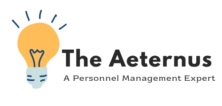Understanding Job Specification and Job Description :
In the realm of human resources, job specification and job description are two fundamental documents that play crucial roles in effective talent acquisition, performance management, and organisational development.
While often used in conjunction, they serve distinct purposes.
Job Specification :
A job specification is a written statement outlining the minimum qualifications, skills, and personal attributes required for a candidate to successfully perform a specific job.
It details the human requirements for the role, ensuring that the organisation can identify and attract individuals with the necessary competencies.
Key Elements of a Job Specification :
* Educational Qualifications: Required academic degrees, certifications, or specialised training.
* Experience: Specific number of years of experience, relevant industry experience, or experience with particular tasks /technologies.
* Knowledge, Skills, and Abilities (KSAs): This includes technical knowledge (e.g., software proficiency, industry regulations), functional skills (e.g., problem-solving, data analysis), and soft skills (e.g., communication, teamwork, leadership).
* Physical Characteristics: Any physical demands of the job, such as lifting requirements, standing for long periods, or specific sensory abilities.
* Personal Characteristics: Desirable personality traits, aptitudes, or behavioural competencies that align with the organisational culture and job demands.
* Other Sensory Demands: Specific sensory requirements like good vision, hearing, or dexterity.
Advantages of a Well-Defined Job Specification :
* Targeted Recruitment: Facilitates the identification and attraction of candidates who possess the essential qualifications for the role.
* Candidate Attraction: Helps potential candidates assess their suitability for a role, encouraging qualified individuals to apply.
* Core Competency Alignment: Contributes to defining and reinforcing the core competencies required across various roles within the organisation.
* Role Clarity: Provides a clear understanding of the human attributes necessary to perform the duties outlined in the job description.
* Effective Matching: Enables the organisation to match candidate qualifications with specific job requirements, streamlining the selection process.
Job Description :
A job description is a formal document that provides a detailed overview of a specific job role within an organisation.
It explains why the job exists, what the job holder does, how they perform their duties, and under what conditions the work is carried out.
The content and style of a job description are often tailored to its primary use.
Key Elements of a Job Description:
* Job Title: A clear and concise name for the position.
* Job Summary: A brief overview of the job’s purpose and primary responsibilities.
* Reporting Relationship: Who the job holder reports to and, if applicable, who reports to them.
* Duties and Responsibilities: A comprehensive list of the tasks, functions, and key performance areas associated with the role.
* Work Environment: Information about the physical conditions, equipment used, and any specific hazards or demands of the work setting.
* Location: The primary work location.
* Salary and Benefits (often included in job postings based on the description): Compensation range and benefits offered, though this might be separate from the internal job description document.
Purpose and Applications of a Job Description:
For the HR Department :
* Candidate Matching : Aids in aligning candidate skills and qualifications with the requirements of the job.
* Training Needs Analysis: Identifies specific training and development needs based on the tasks and responsibilities.
* Performance Standard Setting: Establishes clear performance metrics related to quality, quantity, time, and cost.
* Workforce Planning: Supports the development of future staffing plans and resource allocation.
* Compensation and Benefits: Provides a basis for determining appropriate wages, salaries, and fringe benefits.
* Fair Employment Practices: Helps ensure equal pay for equal work and promotes equal opportunities throughout the organisation.
For Employees:
* Career Progression: Assists employees in understanding potential career paths and growth opportunities within the organization.
* Development Goals: Helps in setting personal and professional development objectives aligned with job responsibilities.
* Role Clarity: Provides a clear understanding of their specific role, duties, and responsibilities.
* Self-Assessment: Enables employees to match their own qualifications against those required for their current or desired roles.
* Organisational Understanding: Contributes to a better understanding of how their role contributes to the overall organisational structure and objectives.
For Managers/Supervisors :
* Operational Control: Facilitates effective oversight and management of departmental functions.
* Performance Management: Provides a framework for formulating performance plans and conducting evaluations.
* Effective Hiring: Guides managers in identifying and selecting the most suitable candidates for their teams.
* Task Assignment and Delegation: Clarifies work assignments and supports effective delegation of responsibilities.
* Role Definition: Ensures clear definition of work assignments and boundaries for each job.
A well-crafted job description should be specific, realistic, and concise, providing complete and accurate details about the job.
Connection and Difference between Job Specification and Job Description :-
While both documents are integral to human resource management, they serve distinct yet complementary functions.
The job description defines the job itself – outlining its purpose, duties, responsibilities, and working conditions. It paints a picture of “what” needs to be done.
In contrast, the job specification defines the ideal candidate for that job – specifying the qualifications, skills, and personal attributes required to successfully perform the duties outlined in the job description. It answers the question of “who” can do the job effectively.
Essentially, the job description describes the role, and the job specification describes the person needed to fill that role.
A comprehensive understanding of both is crucial for attracting the right talent and ensuring successful job performance.



